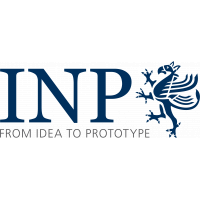The data correspond to the results of modelling studies of DC electric arcs at a current of 2 A in air with admixture of copper metal vapour. Experimental findings are used to adjust input parametrs of the model in order to achieve a good match. The simulations are performed strating with a discharge burning with a minimum gap length of 30 µm for a physical time of 11 ms. Then, the separation of the electrodes is followed for further 51 ms and the discharge gap is increased up to 3 mm. The comparision of experimental and modelling data is based on the measured arc voltage. Variations of the discharge radius during the contact opening, the field enhancement factor, and the molar fraction of copper metal vaopur show the sensitivity of the computed arc voltage.
| Field | Value |
|---|---|
| Group | |
| Authors | |
| Release Date | 2025-08-26 |
| Identifier | 92c2e1d1-e75b-4c53-ada1-70c2e496dfad |
| Permanent Identifier (DOI) | |
| Permanent Identifier (URI) | |
| Is supplementing | |
| Plasma Source Name | |
| Plasma Source Application | |
| Plasma Source Specification | |
| Plasma Source Properties | The electrode configuration under atmospheric pressure air conditions includes two cylindrical electrodes made of pure Cu with a diameter of 4 mm and a length of 12 mm, which are aligned on a common axis one electrode. One electrode is fixed while the other can be moved along the axis by means of a step motor. |
| Plasma Source Procedure | The arc ignites with the start of the contact separation. At a very small gap, the current is enforced to flow through tiny metal parts, which leads to their evaporation. The discharge gap is filled with copper metal vapour. With the further increase of the gischarge gap, the surrounding air is mixing with the metal vapour. |
| Plasma Medium Name | |
| Plasma Medium Properties | The presence of metal vapour changes significantly the plasma properties due to the low ionization energy of the Cu atoms. The electric conductivity of the plasma medium increases in comparison to pure air. |
| Plasma Medium Procedure | No specific gas treatment. |
| Plasma Target Name | |
| Plasma Target Properties | Melting and evaporation. |
| Plasma Target Procedure | Heat fluxes to the electrodes from the plasma can lead to melting and evaporation. |
| Plasma Diagnostics Name | |
| Plasma Diagnostics Properties | The unified non-equilibrium fluid model in one dimension is used to explore the plasma parameters (model description is provided in doi:10.1088/1361-6463/ad9f79). The model solves the equations for conservation of species, energy of electrons and heavy particles (atoms, molecules, ions), the Poison equations for the electric potential, the heat transfer in the electrodes for a current level controlled by an external circuit. |
| Plasma Diagnostics Procedure | The simulations are performed strating with a discharge burning with a minimum gap length of 30 µm for a physical time of 11 ms. Then, the separation of the electrodes is followed for further 51 ms and the discharge gap is increased up to 3 mm. The comparision of experimental and modelling data is based on the measured arc voltage. Variations of the discharge radius during the contact opening, the field enhancement factor, and the molar fraction of copper metal vaopur show the sensitivity of the computed arc voltage. |
| Language | English |
| License | |
| Public Access Level | Public |
| Contact Name | Baeva, Margarita |
| Contact Email |
Data and Resources
- Modelling studies of arcs of short length between copper electrodes - Computed arc voltage as a function of the time of moving for various discharge radii (figure 1)csv
Computed arc voltage as a function of the time of moving for a field...
Preview Download - Modelling studies of arcs of short length between copper electrodes - Computed arc voltage as a function of the time of moving for various values of the field enhancement factor (figure 2)csv
The simulation are performed with a molar fraction of copper of 0.002 and a...
Preview Download - Modelling studies of arcs of short length between copper electrodes - Computed arc voltage as a function of the time of moving for various admixtures of copper metal vapour (figure 3)csv
The molar fraction of copper metal vapour has values of 0.002, 0.005, and 0....
Preview Download - Modelling studies of arcs of short length between copper electrodes - Distribution of the electric potential for selected gap lengths during the contact opening (figure 4a)csv
The computed electric potential is shown for a number of gap lengths during...
Preview Download - Modelling studies of arcs of short length between copper electrodes - Distribution of the electron temperature in the discharge gap for various gap lengths during the contact separation (figure 4b1)csv
The data shows the distribution of the electron temperature in the discharge...
Preview Download - Modelling studies of arcs of short length between copper electrodes - Distribution of the gas temperature in the discharge gap for various gap lengths during the contact separation (figure4b2)csv
The data shows the distribution of the gas temperature in the discharge gap...
Preview Download - Modelling studies of arcs of short length between copper electrodes - Distribution of the mole fraction of neutral species in the discharge gap for a gap length of 3 mm (figure 5a)csv
The figure shows the distribution of the molar fractions of the neutral...
Preview Download - Modelling studies of arcs of short length between copper electrodes - Distribution of the number densities of electrons and singly charged copper ions in the discharge gap for a gap length of 3 mm (figure 5b)csv
The figure shows the distribution of the number densitiy of electrons and...
Preview Download

![[Open Data]](https://assets.okfn.org/images/ok_buttons/od_80x15_blue.png)